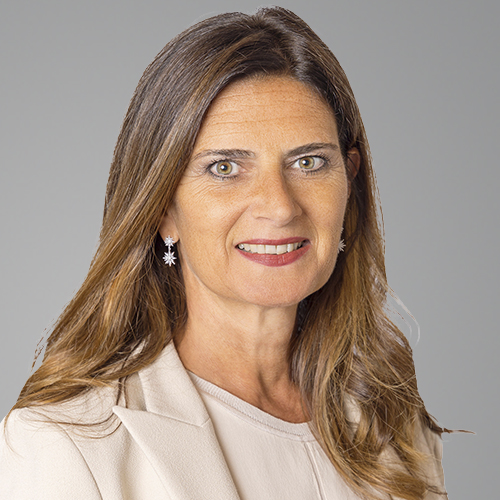The world as we have known it for the past few decades now looks to have been fundamentally turned on its axis, as indeed have traditional portfolio-management models. In light of this new environment, in which crises – each of which is not necessarily related to the next – appear thick and fast, private banks have to have the right asset management tools to protect their clients’ assets.
While the economic and geopolitical upheavals of recent years have already shaken a number of assumptions, Donald Trump’s return to power seems to have upturned our world, throwing it into total uncertainty. Indeed, the fundamental post-war principles that were thought to be immutable, such as free trade and globalisation, have now been thrown into doubt.
For investors, this disruption has translated into unpredictable market movements which have been putting portfolios under a lot of strain. For example, between 3 and 4 April, the S&P 500 (the main index for US equities), tumbled by 10.5%, before bouncing back by 9.5% in a single day on 9 April.
Moreover, these market upheavals, which are apt to generate or wipe out a year’s worth of performance in just a few hours, are now affecting the majority of asset classes – not only equities and bonds, but also commodities and currencies. With the US administration seemingly ready to set off a global-level commercial and economic earthquake, we have moved from an ‘ordinary’ system of volatility into an environment that has become tough to navigate.
Increasingly sophisticated and flexible asset management
In order to avert losses, private banks have, in principle, a tried and tested range of financial weapons in their arsenals. The classic is diversification, which, financially speaking, plays to the old adage of ‘not putting all your eggs in one basket’. While this piece of conventional wisdom still has its place, it is no longer enough in the current circumstances. Indeed, traditionally, equities and bonds – which constitute the core of many portfolios – move in opposite directions, which helps to reduce risk in allocations. However, at the moment, equities and bonds are both falling at the same time.
This means having to offer uncorrelated alternative investment solutions, such as hedge funds, private markets or structured products, as well as safe-haven assets, such as gold or the Swiss franc. On top of this, defensive or hedging tools, such as options, must be added, as these can temporarily reduce volatility without throwing asset allocations out of kilter in the long term.
In order to avoid ‘emotional’ choices, these strategies must of course be based on a solid macroeconomic scenario. However, beyond a vital long-term vision, there also has to be an ability to constantly anticipate and ask questions in order to be able to rapidly adjust positions should the cycle shift. Indeed, whereas when the economy was relatively stable in 2023 and 2024 and there was no need to make any major short-term reallocations, the current turmoil is so great that they call this balance into question and therefore demand a high level of responsiveness, along with use of tactical tools to protect portfolios.
Asset management’s key advantage
Knowing how to constantly question yourself and adapt to a shifting environment is, without a doubt, essential; acting quickly even more so. When US tariffs wiped USD 6 trillion off Wall Street’s value in just two days, responsiveness proved to be crucial. However, at the majority of private banks, any decision by an investment committee takes several days to implement.
This sort of time lag can, unfortunately, make any such decision – however relevant to begin with – obsolete, or even counterproductive. It is therefore vital to have the governance and tools in place that enable asset allocation adjustments to be carried out immediately. That involoves, for example, the ability to apply certain decisions to asset management mandates in under an hour. It is this sort of agility that can make the difference between a good (but ultimately useless) decision, and a real result.
For a private bank, having an in-house asset management business is a key advantage.
It enables private investors to benefit from a quality service, a range of expertise, and a level of sophistication that are generally reserved for institutional clients. This sort of facility also guarantees a focus on risk management, which is an essential factor for private clients, one of whose core objectives remains the protection of wealth.
Behind the numbers, there are always individuals, families, and wealth to protect. This responsibility demands an asset management approach that is both rigorous and responsive, based on the profession’s human dimension; this is all the more important in the current climate of uncertainty.
Working together closely: a key factor for client satisfaction
When times are turbulent, it is just as important to adjust positions as to reassure clients by explaining to them the decisions that have been taken and the impact of those decisions on their portfolios. Sharing knowledge breeds confidence, and the greater the confidence, the greater the latitude a client gives their bank in managing their investments. Matching decisions to the needs and expectations of clients is fundamental in order to establish long-lasting relationships based on trust.
Consequently, it is essential to know your clients as well as you can and to regularly review their risk profiles, as their situations can change over time. Outsourcing asset management undeniably offers advantages. Discretionary mandates enable highly responsive decisions which faithfully reflect a bank's investment strategy and convictions, whose ultimate aim remains safeguarding the interests of its clients. This is crucial given the extreme market conditions and volatility that we are currently facing.









